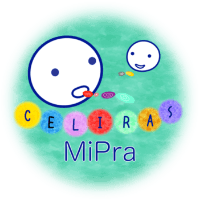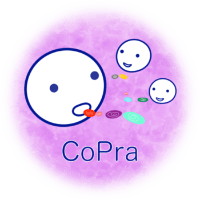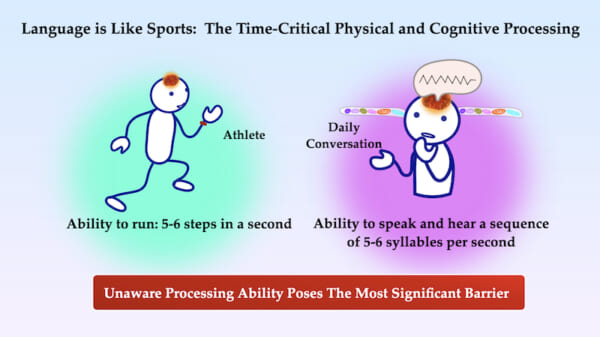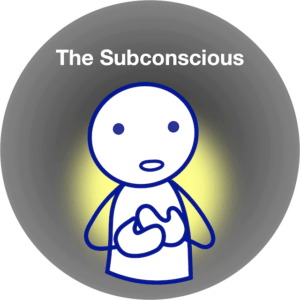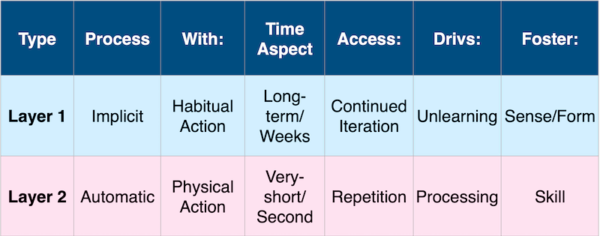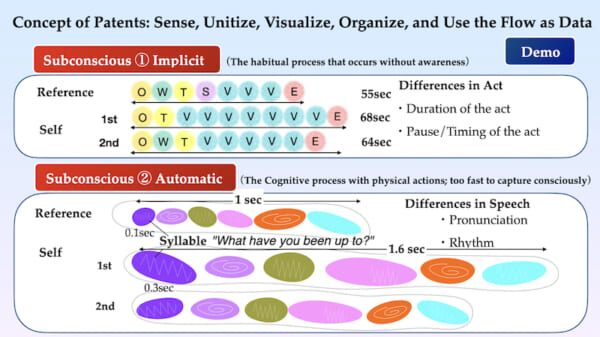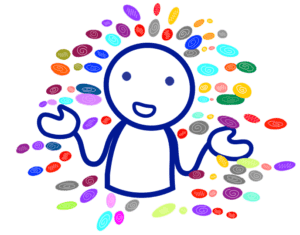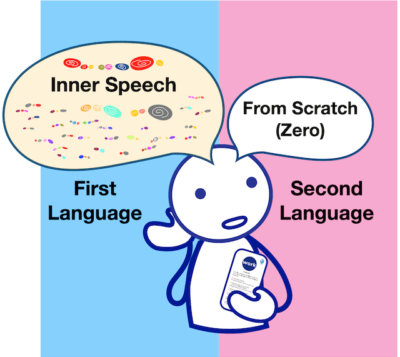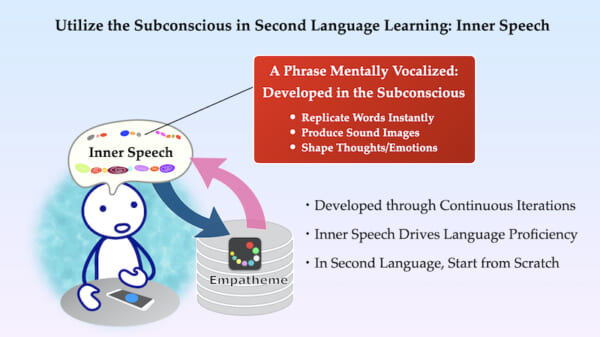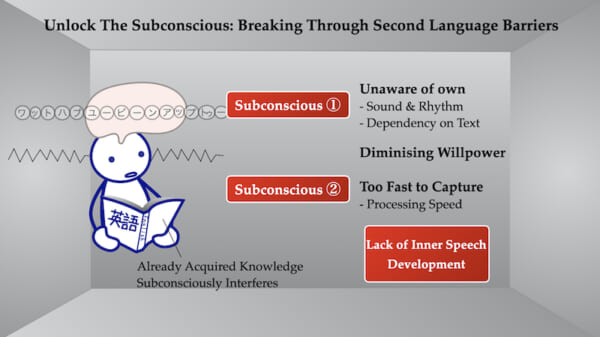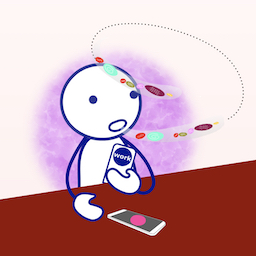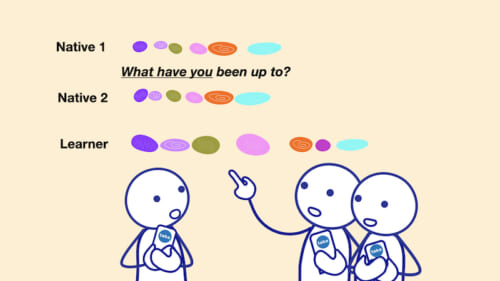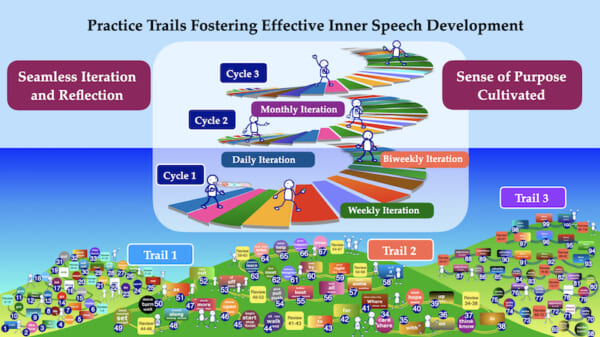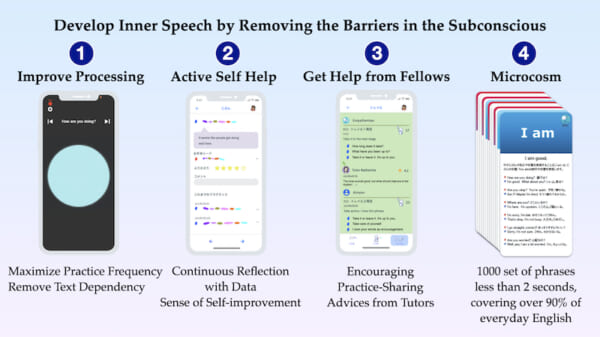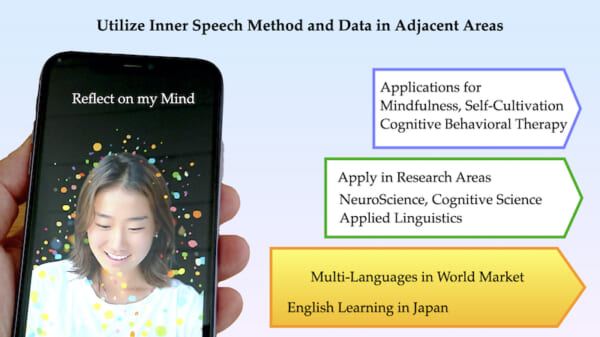❶ Download Empatheme App & Sign up
The most significant barriers to learning reside in your subconscious mind.
The subconscious governs habitual processes that occur without our awareness and automatic body movements that are too swift for our conscious mind to capture.
Empatheme is an innovative technology and method designed to shatter the self-practicing barriers we confront unknowingly.
It reproducibly generates subconscious processes, including speech. and capture the flow as data, unitize, visualize, and utilize the data.
It allows for gaining insight into one’s unaware behavior and developing subconscious automacy through continued practice.
Empatheme enables these processes to be replicated and learned through seamless iterations by reproducing, uniting, and visualizing subconscious processes, including speech.
It’s not about the quantity of knowledge but about concretely realizing what you’re missing. Empatheme encourages the development of language skills through auditory experiences, cultivates a sense of continuous improvement, and promotes a focused learning attitude.
You can download Empatheme app here.
❷❸ Select a Course
Learn to Practice Every Day With Empatheme
Self-Cultivation
Practice Cultivating Yourself
Caring & Helping
Practice Caring and Sharing
The Learning Barriers
The most significant barrier to learning resides within our subconscious mind. It governs habitual processes without our awareness, including swift automatic body movements that elude conscious capture.
Empatheme is an innovative technology and method designed to break down the “self-learning barriers” we unknowingly face.
The Four Stages of Competence Limitation
A critical challenge exists within the “four stages of learning and competence,” a commonly recognized framework for learning:
- Unconscious incompetence: You don’t know what you can’t do.
- Conscious incompetence: You know that you can’t do it.
- Conscious competence: You know that you can do it.
- Unconscious competence: You can do it without thinking about it.
While these stages are typically presented as a sequential progression from 1 to 4, the learning process is not always linear.
The traditional view of learning focuses on conscious effort and knowledge acquisition, primarily addressing stages 2 and 3.
Overlooking Crucial Aspects
Reaching stage 4, where tasks become accomplished without conscious thought, is often challenging. This stage is frequently attributed to individual qualities and efforts, making it appear as an exclusive ability attainable only by a select few.
Stage 1 is often underestimated as it resides within the subconscious realm. It is so difficult to notice what the conscious mind cannot grasp.
Language is a Subconscious Process
Empatheme provides access to stage 1, an aspect often overlooked in traditional learning perspectives, and paves the path toward stage 4.
Empatheme enables the replication and learning of these processes through seamless iterations by reproducing, uniting, and visualizing subconscious processes, including speech.
It is essential to recognize that language use, including speech processing, is subconscious. We often don’t realize or even think about it.
Unawareness of Your Ability Hinders Progress
Language is like sports. The time-critical physical ability and cognitive processing alongside each other matter crucially.
Just as in sports, the brain must rapidly process information to coordinate physical movements within a second.
Knowledge-based assessment does not measure physical and cognitive processing abilities with the granularity of level.
Unconscious Incompetence and Self-awareness
Unconscious incompetence (Stage 1 in the figure) refers to unaware of one’s physical and cognitive processing abilities that have not yet been acquired.
It is not simply a matter of lacking specific knowledge.
Innate Ability to Realize and Act with Imagination
Through Empatheme’s utilization of sensing data capturing subconscious behavior, including voice, You gain self-awareness and develop the ability to process words with sound and rhythm.
Empatheme allows for identifying processing skills that individuals have yet to master, providing insight into their unconscious abilities.
Form (posture) > Sense > Skill (processing ability)
Additionally, Empatheme draws out the subconscious functions of the mind, such as imitation and imagination, to cultivate the sense necessary for continuous improvement.
This requires a dedicated space and mindset for a few minutes of immersive and focused practice.
Empatheme creates an environment that facilitates the flow of practice, enabling the natural activation of unconscious power when the body engages in thinking.
Through this process, one’s behavior becomes subconscious (embodied), allowing consistent practice without conscious effort.
The Untapped Potential of the Subconscious Mind as a New Resource
The subconscious mind holds the key to unlocking human potential. While it may be tempting to picture the subconscious as a mystical force or hidden power, it comprises commonplace mental processes.
Studies show that the subconscious accounts for 95% of our mental activity, yet we cannot access it directly or intentionally. We constantly use our subconscious without awareness. Despite its outsized role, we often fail to tap into our potential because we are unaware of how to harness the power of our subconscious.
Our subconscious mind resembles a valuable natural resource like silicon. Just as silicon sustains modern civilization through mining, extraction, refinement, and utilization, we can unlock the power of the subconscious through meaningful and targeted actions.
Empatheme is the method and technology that generates subconscious processes reproducibly, which we can capture, unitize, and visualize the flow as data. This allows for gaining insight into one’s unaware behavior and developing subconscious automacy through continued practice.
By creating scenarios that stimulate subconscious processes manifested in our actions, we can capture and extract this valuable data for reuse in digital form.
If we could understand the process by which the subconscious mind operates and capture it, we could transform this perceived limitation into a powerful tool we can harness to our advantage.
By unlocking the potential of our subconscious mind, we can facilitate the learning process and make it more enjoyable, allowing us to internalize what we truly learn. We developed the concept and the vision for a practical and replicable method to utilize the power of the subconscious mind.
Two Layers of Subconscious Processes
Our approach utilizes the power of the subconscious by identifying two layers of subconscious processes.
Layer 1 involves implicit habitual processes that occur without our awareness.
Layer 2 involves automatic cognitive processes accompanying physical actions that happen too quickly to capture in real-time, typically within a second of the physical movement.
Subconscious processes occur on different time horizons, with some mental operations taking place over the long term (such as habit formation) and others taking place over the short period (such as the repetition of physical actions).
Layer 1 often comprises Layer 2 processes, such as the repetitive physical actions required to develop skills. And Layer 2 processes, in turn, can reinforce Layer 1 through repetition and reinforcement.
By engaging in an iterative process involving the subconscious mind, such as sitting down quietly and breathing out, then vocalizing a phrase, we naturally allow our subconscious to coincide in layers 1 and 2.
Using this two-layer approach, we can capture data, visualize patterns, and reflect on our actions, accessing and analyzing information beyond our conscious awareness.
What is Inner Speech?
The greatest resource of the subconscious is inner speech.
Inner Speech is the language that can be mentally vocalized and replicated instantly in the brain. It is a mental resource that builds in the subconscious and shapes thoughts and emotions.
Inner speech is formed through the process of vocalizing. Whenever an individual recalls a phrase and puts it in and out of their voice, they reproduce it in the brain, connecting the sound sequence with the corresponding images.
With repeated iterations and experiences, the individual gradually internalizes the phrase, reaching a level where it can be silently vocalized in the brain. The image of a sound sequence becomes clear and tangible.
This process involves the development of neural connections and pathways, allowing for the rapid and effortless retrieval of phrases from memory.
In a native language, much of this process has already occurred during early childhood. However, second language learning must be developed from scratch since learners do not have inner speech in the second language. This seemingly obvious-sounding viewpoint is novel.
Inner Speech Drives Second Language Acquisition
We apply the approach to second language learning, recognizing that it is primarily a subconscious process, contrary to the general perception that it is a conscious act.
Unlocking the potential of the subconscious is the most crucial driver for effective second language learning.
Harness the Processing Ability Within The Working Memory Span
Inner speech, fundamental to, and a critical driver for second language learning.
Research shows considerable correlations between second language proficiency and inner speech proficiency, which is critical for faster processing and more efficient retrieval of language elements from memory. This relies on working memory capacity, process speed, and other processes at both subconscious layers.
Also, unlike inner speech in the native language, where much of it has already been acquired; as a result, challenging to measure, inner speech in second language learning is a measurable and valuable source of information.
How to Unlearn Already Acquired Native Patterns
However, no method focused on developing and cultivating inner speech has been available.
It is because inner speech development in a second language involves unlearning native language patterns that learners have already developed and is not a straightforward process.
These deeply rooted patterns, such as rhythm patterns and dependency on word-reading, subconsciously interfere with acquiring a second language, making it more challenging to develop inner speech proficiency.
Additionally, conventional second language teaching focuses on the conscious, knowledge-acquisition aspects of reading and understanding, converting second-language vocabulary and grammar into the native language rather than on inner speech development.
On the other hand, most research is focused on inner speech in their native language, lacking a comparative aspect.
The barriers at the subconscious level
First, there is the shallow frequency (quantity) of practices in which one reproduces (imitates) models aloud, and there is an invisible barrier in how one replicates. (quality). For example, the challenge for Japanese people in learning English is not a lack of knowledge.
There are patterns deeply rooted in memory, such as the sounds and rhythms of the native language and subconscious dependence on letters to understand the meaning of words by reading them.
There are subconscious layers (1) and (2), habits that the Self is not aware of, and too fast (too short a time) to be able to capture them consciously.
The fundamental challenge is gradually removing the subconscious barriers (switching between the two language habits)
The subconscious hold-ups can be a significant hurdle to inner speech development, hindering second language learning.
In addition, conventional second language education focuses on the conscious, knowledge acquisition aspect of learning by reading and understanding, converting second language vocabulary and grammar into the native language, rather than on inner speech development.
Removing the hidden walls
There are subconscious pitfalls in what we accept as “easy” because we can read and understand the meaning.
You cannot achieve results by doing what you are not doing. It is necessary to have a mechanism to notice the barriers in the subconscious layer.
Measure Your Inner Speech
Empatheme can solve this problem by capturing the subconscious process in both layers, effectively measuring the inner speech development process over time, and providing helpful insight.
The critical aspects of second language learning occur in the subconscious, so finding a viable method of capturing and reusing this information is essential.
Since the subconscious is intangible, it must be treated as an object to incorporate its processes and information into language learning effective.
Empatheme provides accurate and detailed feedback that learners can access and review, allowing them to compare their performance with native speakers’ examples and their pattern change to realize their progress – in a visible, tangible, and audible way.
This approach differs from the conventional way of providing learners with a simple overall score. It enables them to reflect on what was happening in their subconscious process that they were unaware of in layers 1 and 2.
Enhancing Inner Speech Through Seamless Iterative and Reflective Process
Empatheme generates an environment conducive to the inner speech by creating affordance for practitioners that allow for seamless iteration and reflection of interactive short phrases that should be vocalized within the limit of working memory, or roughly two seconds.
It helps to develop faster brain processing using working memory constraints necessary for inner speech development.
With continuous practice, learners can gradually internalize the language, developing a sense of fluency and intuition over time.
Furthermore, Empatheme provides a practice-sharing platform where learners can share their practices with their fellow practitioners, encouraging each other and replenishing the psychological energy that can subconsciously be dampened in busy daily life.
Empatheme facilitates the interplay between the iterative practices of Layer 1 and the automatic cognitive processes of Layer 2, resulting in the development of inner speech proficiency.
This proficiency is essential in cultivating a sense of purpose and sustaining iterative practices. Through this cycle, Empatheme empowers individuals to unlock their full potential by harnessing the power of their subconscious mind.
Empatheme can potentially changes the game for second language learning by focusing on developing inner speech and utilizing the subconscious mind as data.
However, as we continue to explore the possibilities of this approach to second language learning, we may discover that it has far-reaching applications beyond this field.
In particular, using inner speech and subconscious data could be a missing piece in the puzzle of personal growth and self-awareness.
We can access a wealth of previously inaccessible insights and knowledge by unlocking the power of our inner speech and subconscious mind.
This breakthrough could have profound implications for fields ranging from mindfulness to cognitive-behavioral therapy, where fostering Empathy and a caring mind is crucial.
Imagine a world where we can communicate with Empathy and walk alongside each other to foster growth and well-being.
Empatheme as The Smallest Unit of Empathy
In the age of AI, Empatheme is a missing link. As I named this vision Empatheme, the smallest unit of Empathy conveyed in inner speech, it will allow us to collect and access previously inaccessible insight and help each other in ways that were not possible.







